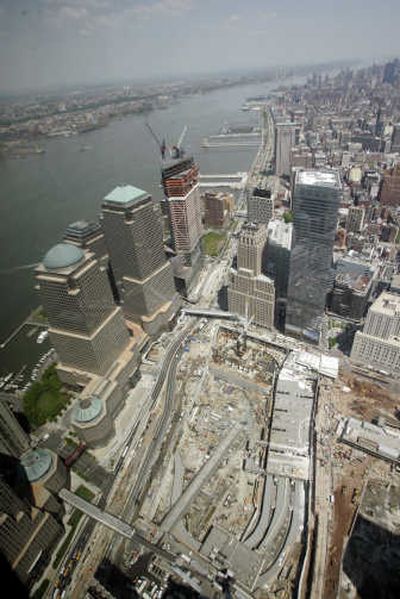NYPD’s unseen eye in the sky

NEW YORK – On a cloudless spring day, the NYPD helicopter soars over the city, its sights set on the Statue of Liberty.
A dramatic close-up of Lady Liberty’s frozen gaze fills one of three flat-screen computer monitors mounted on a console. Sightseers below are oblivious to the fact that a helicopter is peering down on them from a mile and a half away.
“They don’t even know we’re here,” said crew chief John Diazo, speaking into a headset over the din of the aircraft’s engine.
The helicopter’s unmarked paint job belies what’s inside: an arsenal of sophisticated surveillance and tracking equipment powerful enough to read license plates – or scan pedestrians’ faces – from high above the nation’s largest metropolis.
Police say the chopper’s sweeps of landmarks and other potential targets are invaluable in helping guard against another terrorist attack, providing a see-but-avoid-being-seen advantage against bad guys.
The chopper is named simply “23” – for the number of police officers killed in the Sept. 11, 2001, attacks.
The $10 million helicopter is just part of the department’s efforts to adopt cutting-edge technology for its counterterrorism operations.
The NYPD also plans to spend tens of millions of dollars strengthening security in the lower Manhattan business district with a network of closed-circuit television cameras and license-plate readers posted at bridges, tunnels and other entry points.
Police have also deployed hundreds of radiation monitors – some worn on belts like pagers, others mounted on cars and in helicopters – to detect dirty bombs.
Privacy concerns
Civil rights advocates are skeptical about the push for more surveillance, arguing it reflects the NYPD’s evolution into ad hoc spy agency.
“From a privacy perspective, there’s always a concern that ‘New York’s Finest’ are spending millions of dollars to engage in peeping Tom activities,” said Donna Lieberman, executive director of the New York Civil Liberties Union.
Police insist that law-abiding New Yorkers have nothing to fear.
“Obviously, we’re not looking into apartments,” Diaz said during a recent flight. “We don’t invade the privacy of individuals. We only want to observe anything that’s going on in public.”
Night vision, more
The helicopter’s powers of observation come from a high-powered robotic camera mounted on a turret projecting from its nose like a periscope. The camera has infrared night-vision capabilities and a satellite navigation system that allows police to zoom in on a location by typing in the address on a computer keyboard.
The surveillance system can beam live footage to police command centers or even to wireless hand-held devices.
On this flight, the helicopter used the camera to look for signs of trouble at several key transportation sites: the decks of the Staten Island ferry terminal, the stanchions of the Verrazzano-Narrows Bridge, the giant air vents feeding the Lincoln Tunnel. All of them passed inspection.
Without leaving Manhattan airspace, the chopper also was able to get a crystal-clear picture of jetliners waiting to take off from LaGuardia Airport and to survey Kennedy International Airport’s jet fuel lines, which were targeted in a plot uncovered last year.